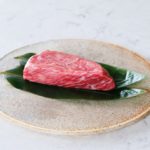Have you ever found joy in a sumptuous hot pot meal, but been left clueless about how to recreate the magic at home? You’re not alone. Like you, I was once daunted by the mysterious Japanese delicacy known as Shabu Shabu, a dish dating from mid-20th century featuring thin slices of meat and assorted vegetables cooked tableside in steamy broth.
However, after some tireless exploration into this gastronomic wonder, I’ve decoded its secrets for all to share! This blog post will guide you through each step – understanding what makes this dish special, its key ingredients and equipment requirements, preparation techniques right down to proper eating etiquette.
Ready for an exciting culinary adventure? Let’s dive in!
Key Takeaways
- Shabu Shabu is a traditional Japanese hot pot dish where thinly sliced meat, vegetables, and noodles are cooked in a boiling broth at the table.
- Key ingredients for Shabu Shabu include top – notch meat options, dipping sauces like ponzu and sesame sauce, a variety of vegetables, and recommended equipment like a hot pot or large pot.
- To prepare and cook Shabu Shabu, start by making a flavorful broth with kombu seaweed. Then add meat slices to the boiling broth followed by an assortment of vegetables. Cook the ingredients in small batches and dip them into your preferred sauce before eating.
- Eating etiquette includes using chopsticks or tongs to pick up cooked meat and veggies from the hot pot. It’s also customary to eat small portions at a time so others can cook their food too.
What is Shabu Shabu?
 Shabu Shabu is a traditional Japanese hot pot dish that involves cooking thinly sliced meat, vegetables, and noodles in a boiling broth at the table.
Shabu Shabu is a traditional Japanese hot pot dish that involves cooking thinly sliced meat, vegetables, and noodles in a boiling broth at the table.
Definition of Shabu Shabu
Shabu Shabu is a tasty dish from Japan. It’s a type of hot pot meal. You cook thin pieces of meat and vegetables in a hot broth at your table. This broth often comes from kombu seaweed, known as dashi.
The name “Shabu Shabu” came from the noise you make when moving the food in the soup! After cooking, you dip these foods into sauces like ponzu or sesame sauce. Many people eat this dish together in a group setting where everyone cooks their own food in the pot.
It’s custom to change it up with different foods, such as tofu and mushrooms, towards each diner’s liking!
Origin and cultural significance
Shabu Shabu is a famous dish in Japan. This yummy hot pot meal started out mid-last century. It got its spark from a Chinese food called “Shuan Yang Rou”. That means “swish-swish meat” in their language.
The name Shabu Shabu tells us about the sound we hear when we stir meat and vegetables in the hot broth. A lot of people eat this food together in winter months because it brings warmth and good times too! They dip cooked pieces into sauces like ponzu or sesame for extra taste.
People can change it up with different things like tofu, mushrooms and noodles if they want to have fun with flavors! Not only does Shabu Shabu taste good, it’s healthy too as cooking time is short so nutrients stay put.
Key Ingredients and Equipment for Shabu Shabu
When it comes to enjoying a delicious Shabu Shabu, the key ingredients are top-notch meat options, dipping sauces and condiments, a variety of vegetables, and the recommended equipment for cooking.
Best meat options
I love a good Shabu Shabu meal. The most important part is the meat you choose.
- Beef is at the top of the list. Thinly sliced prime cuts like ribeye or sirloin taste great.
- Pork belly slices are also a tasty choice. They add a rich flavor to your hot pot.
- Chicken breasts, thinly sliced, make for leaner and lighter bites.
- Lamb lovers can use thinly sliced lamb shoulder for a change in taste.
Dipping sauces and condiments
You’ll love the variety of dipping sauces and condiments that enhance the flavors of your Shabu Shabu experience. Here are some options to try:
- Ponzu sauce: A tangy and citrusy sauce made from soy sauce, vinegar, and citrus juice. It adds a refreshing kick to your meat and vegetables.
- Sesame sauce: A creamy and nutty dip made from ground sesame seeds, soy sauce, and other seasonings. It adds richness and depth to each bite.
- Goma dare: A thick sesame-based sauce with a slightly sweet taste. It’s perfect for coating your meat slices with its flavorful texture.
- Yuzu kosho: A spicy and aromatic condiment made from yuzu zest, chili peppers, and salt. It gives your Shabu Shabu an extra kick if you enjoy bold flavors.
- Gochujang: A Korean fermented chili paste that adds a spicy and savory element to your hot pot experience.
- Miso paste: Create a savory broth by adding miso paste to your dipping sauces. Its umami flavor pairs well with any meat or vegetable.
Vegetables and other optional ingredients
I love adding vegetables and other ingredients to my Shabu Shabu hot pot. Here are some delicious options to try:
- Fresh cabbage leaves
- Sliced carrots
- Mushrooms, such as shiitake or enoki
- Tofu cubes or slices
- Spinach or other leafy greens
- Bean sprouts
- Thinly sliced onions
- Bell peppers, thinly sliced
- Snow peas or sugar snap peas
Recommended equipment for cooking
To cook Shabu Shabu at home, you’ll need a few key equipment:
- A hot pot or large pot: This is where you’ll cook the broth and ingredients. Make sure it’s big enough to accommodate everyone’s portions.
- Portable burner or electric hot pot: If you don’t have a stove with a built-in pot, a portable burner or electric shabu hot pot will come in handy. It allows you to have the hot pot experience anywhere.
- Ladle or tongs: These are essential for retrieving cooked ingredients from the hot broth.
- Individual dipping bowls: Each person should have their own small bowl for dipping sauces. This ensures that everyone can customize their flavors without cross-contamination.
- Chopsticks or forks: Choose your preferred utensil for picking up meat, vegetables, and noodles from the hot pot.
- Strainer or skimmer: This helps remove any impurities from the broth during cooking.
- Heat-resistant serving platters: If you want to transfer cooked ingredients to individual plates before eating, heat-resistant serving platters are useful.
How to Prepare and Cook Shabu Shabu
To prepare and cook Shabu Shabu, start by preparing the flavorful broth and gathering all the fresh ingredients. Then, enjoy the interactive cooking process as you dip thinly sliced meat, vegetables, and other ingredients into the hot pot to cook.
Discover tips for achieving optimal flavor and texture in this delightful Japanese hot pot dish. Read on for a step-by-step guide on preparing and cooking Shabu Shabu!
Preparing the broth and ingredients
Preparing the broth and ingredients for Shabu Shabu is easy and fun. Here’s how I do it:
- First, I make a simple dashi broth by boiling kombu seaweed in water. This gives the broth a delicious umami flavor.
- Then, I add thinly sliced meat, like beef or pork, to the boiling broth. The meat cooks really quickly in the hot liquid.
- Next, I gather an assortment of vegetables, like cabbage, mushrooms, and tofu. These add color and texture to the dish.
- I also prepare some dipping sauces to enhance the flavor. My favorites are ponzu sauce and sesame sauce.
- Once everything is ready, I heat up my hot pot and bring the broth to a boil. Then it’s time to start cooking!
Cooking process and techniques
Let’s dive into the cooking process and techniques of Shabu Shabu! Here’s how you can create this delicious hot pot dish:
- Start by heating the broth: Pour the dashi broth into a large pot and bring it to a boil.
- Add flavor to the broth: You can enhance the taste by adding ingredients like sliced ginger, garlic, or even a splash of soy sauce.
- Prep your meat and vegetables: Thinly slice your preferred meat, such as beef or pork. Prepare an assortment of vegetables like napa cabbage, shiitake mushrooms, and tofu.
- Cook the meat in the boiling broth: Take a piece of meat with your chopsticks and place it into the boiling broth. Swish it around for a few seconds until it cooks to your desired doneness.
- Cook the vegetables in the broth: Add your vegetables to the pot and let them cook for a short time. Make sure they retain their crunchiness for added texture.
- Dip and enjoy: Once cooked, use your chopsticks to dip each piece of meat or vegetable into your preferred dipping sauce (such as ponzu or sesame sauce) before eating.
- Repeat and savor: Continue cooking and enjoying various combinations of meat, vegetables, and sauces until you’ve had your fill.
Tips for achieving the best flavor and texture
For the best flavor and texture in your Shabu Shabu, here are some tips:
- Choose high-quality meat: Look for thinly sliced beef or pork with marbling for tender and juicy results.
- Don’t overcook the meat: Dip the slices into the boiling broth just until they turn color, then swish them around for a few seconds before removing.
- Cook vegetables separately: To retain their crispness, cook vegetables like cabbage and mushrooms in a separate wire mesh basket or strainer and transfer them to your individual bowls once cooked.
- Experiment with different dipping sauces: Try ponzu sauce made from citrus juice and soy sauce, or sesame sauce blended with crushed sesame seeds and soy sauce, to add different flavors to your meal.
- Use fresh ingredients: Opt for fresh seafood, tofu, and vegetables to enhance the overall taste of your Shabu Shabu.
- Don’t overcrowd the pot: Cook ingredients in small batches to ensure they cook evenly and don’t become mushy.
- Enjoy the communal experience: Shabu Shabu is meant to be a shared meal where everyone cooks their own food. Engage in conversation while cooking and enjoy the interactive dining experience.
- Be mindful of cooking times: Different ingredients require varying cooking times, so familiarize yourself with how long each ingredient needs to cook to avoid under or overcooking them.
How to Eat Shabu Shabu
When it comes to enjoying Shabu Shabu, there are a few key steps to follow for an authentic experience.
Proper etiquette and traditions
When enjoying Shabu Shabu, it’s important to follow proper etiquette and traditions. First, remember to use your chopsticks or tongs to pick up the thinly sliced meat and vegetables from the hot pot.
Swish them in the boiling broth for a few seconds until they’re cooked just right. Then, dip them into your favorite sauces for extra flavor. It’s also customary to eat small portions at a time, so others can have a chance to cook their ingredients.
And don’t forget to savor the communal dining experience by chatting with your fellow diners while enjoying this delicious meal.
Dipping sauces and flavor combinations
Let me share with you some mouthwatering dipping sauces and flavor combinations to enhance your Shabu Shabu experience:
- Ponzu Sauce: A tangy citrus-based sauce made with soy sauce, rice vinegar, and fresh lemon or lime juice. It adds a refreshing zing to the meat and vegetables.
- Sesame Sauce: A creamy and nutty sauce made from ground toasted sesame seeds, soy sauce, sugar, and a dash of vinegar. It pairs well with the rich flavors of beef or pork.
- Goma Dare: A traditional Japanese sesame dipping sauce that combines the earthiness of roasted sesame seeds with soy sauce and mirin. Its velvety texture complements the tender meat slices.
- Spicy Miso Sauce: If you love a little heat, mix miso paste, chili oil, soy sauce, and garlic for a spicy kick. This sauce adds depth and complexity to the hot pot experience.
- Yuzu Kosho: A citrusy and spicy condiment made from yuzu zest, chili peppers, and salt. Its unique flavor profile elevates the taste of seafood or other delicate ingredients.
- Green Onion & Ginger Sauce: Combine finely chopped green onions and grated ginger with soy sauce for a simple yet flavorful dipping option. It brings out the natural umami of the ingredients.
- Wasabi Soy Sauce: Mix soy sauce with a hint of wasabi paste for an extra punch of heat and sharpness. This combination works exceptionally well with delicate seafood like scallops or shrimp.
- Sweet Chili Sauce: For those who enjoy a sweet and spicy flavor profile, dip your cooked meat or veggies into a sweet chili sauce infused with garlic, ginger, and crushed red pepper flakes.
Enjoying the communal dining experience
One of the unique aspects of enjoying Shabu Shabu is the communal dining experience. When you gather with family or friends around a hot pot, it creates a fun and interactive atmosphere.
Everyone gets to cook their own meat and vegetables in the boiling broth, which adds an element of excitement to the meal. Additionally, sharing food from a communal pot fosters a sense of togetherness and enhances social bonding.
It’s a great way to connect with others while enjoying delicious food. Plus, you can customize your own dipping sauces and experiment with different flavor combinations as you dip your cooked ingredients.
Variations and Substitutes for Shabu Shabu
There are plenty of variations and substitutes for Shabu Shabu to cater to different dietary preferences, including vegetarian and vegan options, seafood alternatives, and regional twists.
Vegetarian and vegan options
When it comes to Shabu Shabu, meat lovers might think that it’s all about the delicious slices of beef or pork. However, there are also fantastic vegetarian and vegan options to enjoy this Japanese hot pot dish. Here are some tasty alternatives:
- Tofu: Silken tofu is a popular choice for vegetarian Shabu Shabu. It absorbs the flavors of the broth and becomes soft and silky when cooked.
- Mushrooms: Shiitake mushrooms are commonly used in Shabu Shabu due to their meaty texture. Other varieties like oyster mushrooms or enoki mushrooms can also be added for extra flavor.
- Noodles: Vegetarian-friendly noodles such as udon or rice noodles can be cooked in the hot broth for a comforting addition to your hot pot experience.
- Assorted vegetables: Load up your hot pot with an array of colorful vegetables like napa cabbage, carrots, bell peppers, and snow peas. They will not only add vibrant colors but also provide a fresh and crunchy texture.
- Dipping sauces: Vegetarian-friendly dipping sauces like ponzu (citrus-based sauce) or soy sauce with sesame seeds can enhance the flavors of your vegetarian ingredients.
Seafood alternatives
If you’re a meat lover, but not a fan of seafood, don’t worry! There are plenty of delicious alternatives you can enjoy in your Shabu Shabu hot pot. Here are some options to consider:
- Chicken: Thinly sliced chicken is a popular choice for Shabu Shabu. It cooks quickly and absorbs the flavors of the broth beautifully.
- Pork: Just like beef, pork can be thinly sliced and used in Shabu Shabu. Look for cuts like pork loin or tenderloin for the best results.
- Lamb: If you’re feeling adventurous, try using thinly sliced lamb in your hot pot. It adds a unique flavor to the dish.
- Tofu: Tofu is a great vegetarian option that adds protein to your meal. Use firm tofu and cut it into cubes or slices before adding it to the pot.
- Mushrooms: Assorted mushrooms like shiitake, enoki, or oyster mushrooms are flavorful additions to your hot pot. They soak up the broth and provide a satisfying texture.
- Vegetables: Fill your hot pot with an array of vegetables like cabbage, bok choy, carrots, or snap peas. They add color and nutrients to your meal.
Regional variations and unique twists
I’ve discovered some interesting regional variations and unique twists of Shabu Shabu that meat lovers like us will surely enjoy:
- Hokkaido-style Shabu Shabu: In Hokkaido, they use high-quality wagyu beef and fresh seafood like scallops and king crab for their hot pot. It’s a luxurious twist on the traditional dish.
- Kobe Beef Shabu Shabu: For a truly indulgent experience, try Kobe beef in your hot pot. The marbled beef melts in your mouth, adding incredible richness to the broth.
- Spicy Sichuan-style Shabu Shabu: If you love spicy food, you’ll enjoy the Sichuan-style hot pot. They add fiery chili peppers and numbing Sichuan peppercorns to the broth for an intense flavor kick.
- Korean Budae Jjigae-inspired Shabu Shabu: This fusion dish combines the flavors of Korean Budae Jjigae (Army Base Stew) with Japanese Shabu Shabu. It includes ingredients like spam, sausages, kimchi, and instant noodles.
- Sukiyaki-inspired Shabu Shabu: In some regions of Japan, they mix elements of Sukiyaki into their hot pot. They use a sweet soy sauce-based broth and add ingredients like tofu, shiitake mushrooms, and napa cabbage.
- Seafood-only Hot Pot: For seafood enthusiasts, there are hot pots that focus solely on seafood ingredients such as shrimp, clams, mussels, and fish balls. It’s a lighter yet flavorful alternative to meat-based hot pots.
- Thai-style Nam Tok Moo Hot Pot: This Thai twist on hot pot uses pork as the main ingredient and incorporates Thai flavors like lime juice, fish sauce, and fresh herbs for a zesty and aromatic experience.
Health Benefits of Shabu Shabu
Shabu Shabu is a low-fat and high-protein meal that offers various health benefits, including nutritional value from ingredients and dietary considerations for modifications. Discover the secrets behind this Japanese hot pot dish! Read more to uncover the amazing health benefits of Shabu Shabu.
Low-fat and high-protein meal
Shabu Shabu is a great choice for meat lovers looking for a low-fat and high-protein meal. The dish typically uses lean cuts of beef or pork, which are thinly sliced and cooked quickly in the hot broth.
By swishing the meat in the boiling broth, you can ensure it stays tender and juicy. Along with the meat, Shabu Shabu includes an array of vegetables that add fiber and nutrients to your meal.
It’s a healthy option as it involves minimal cooking time, preserving the nutritional value of the ingredients. So if you’re watching your fat intake but still crave a delicious and satisfying meal, Shabu Shabu is definitely worth a try!
Nutritional value of ingredients
Shabu Shabu is considered a healthy dish due to its high-quality ingredients and the minimal cooking time, which helps retain the nutrients. Let’s delve deeper into the nutritional value of some common Shabu Shabu ingredients.
| Ingredient | Nutritional Value |
|---|---|
| Thinly sliced beef | Beef is an excellent source of protein, vitamin B12, iron, and zinc, which are essential for muscle growth and immune function. Remember, opt for lean cuts to limit saturated fat intake. |
| Tofu | Tofu is a valuable plant-based protein, rich in calcium and several B vitamins. It also contains all nine essential amino acids and is a good source of iron and magnesium. |
| Mushrooms | Mushrooms are low in calories, have virtually no fat, no cholesterol, and are very low in sodium. They’re also packed with fiber, vitamins, and minerals. |
| Napa cabbage | Napa cabbage boasts high levels of vitamin C and K. It also contains folate, calcium, and several other nutrients while being low in calories. |
| Kombu seaweed | Kombu is a great source of iodine, important for thyroid function. It also offers dietary fiber, potassium, calcium, iron, and even some protein. |
| Ponzu Sauce | Ponzu sauce is low in calories and fat. Its citrus components can provide some Vitamin C, though it’s usually consumed in small amounts. |
So, as a meat lover, you can enjoy Shabu Shabu not only for its delightful taste but also for its health benefits. Indulging in this dish gives you an array of essential nutrients, making every bite all the more satisfying.
Dietary considerations and modifications
Shabu Shabu is a versatile dish that allows for dietary considerations and modifications. If you’re watching your diet, you can choose lean cuts of meat like beef or pork loin. This way, you can still enjoy the delicious flavors without consuming excess fat.
For those who prefer seafood, shrimp or scallops are great options to add into the hot pot. Vegetarians and vegans can also enjoy Shabu Shabu by substituting meat with tofu or tempeh.
Additionally, there is a wide variety of colorful vegetables you can include, such as cabbage, mushrooms, and napa cabbage. It’s important to note that the cooking time in Shabu Shabu is short, which helps retain the nutrients in the ingredients.
Conclusion and Final Thoughts
In conclusion, Shabu Shabu is a magical Japanese hot pot dish that brings joy to meat lovers. With its flavorful broths, tender meats, and fresh vegetables, it’s a gastronomic experience like no other.
Whether enjoyed at a restaurant or made at home, Shabu Shabu offers a delicious and communal dining experience that warms both the body and the soul during the winter months. So gather your loved ones around the table and embark on a culinary adventure with this delightful Japanese hot pot!
FAQs
Q: What is Shabu Shabu?
A: Shabu Shabu is a Japanese hot pot dish where thinly sliced meat and vegetables are cooked in a boiling broth.
Q: What are the essential ingredients for Shabu Shabu?
A: The essential ingredients for Shabu Shabu are thinly sliced meat (usually beef or pork), a variety of vegetables (such as cabbage, mushrooms, and leafy greens), tofu, and noodles.
Q: What is the broth used in Shabu Shabu?
A: The broth used in Shabu Shabu is typically a combination of dashi (Japanese stock) and water. Some variations may use a miso-based broth or a spicy broth.
Q: How do you eat Shabu Shabu?
A: To eat Shabu Shabu, you dip the cooked meat and vegetables into a sauce or condiment, such as ponzu (citrus-based sauce) or sesame sauce, before eating. You can also dip the ingredients into a raw beaten egg for added richness.
Q: What are the different types of nabe used for Shabu Shabu?
A: The different types of nabe used for Shabu Shabu include donabe (earthenware pot), electric hot pots, and regular stock pots. Donabe pots are commonly used in Japan for cooking hot pot dishes.
Q: What ingredients are typically added to the Shabu Shabu pot?
A: Besides the meat and vegetables, ingredients such as seafood (like shrimp and scallops), tofu, and glass noodles are often added to the Shabu Shabu pot for variety and extra flavors.
Q: Can I make Shabu Shabu at home?
A: Yes, you can make Shabu Shabu at home using a portable electric hot pot or a regular stock pot. It is a fun and interactive meal to enjoy with family and friends.
Q: Is Shabu Shabu a popular dish in Japan?
A: Yes, Shabu Shabu is a popular dish in Japan and is commonly found in hot pot restaurants. It is also a popular choice for those who love hot pot-style cooking.
Q: What is Chanko Nabe?
A: Chanko Nabe is a type of nabe that is often associated with sumo wrestlers. It is a hearty hot pot dish that is packed with protein and vegetables, traditionally eaten by sumo wrestlers for their calorie-rich diet.
Q: Are there different types of broth that can be used for Shabu Shabu?
A: Yes, there are different types of broth that can be used for Shabu Shabu, such as soy-based, miso-based, or even spicy broths. The choice of broth can vary depending on personal preference.
Greetings!
With over two decades of diverse experience in the meat industry, I proudly stand as an expert in all things meat. My journey commenced with a strong foundation in hospitality, where I honed my culinary skills as a chef in prestigious restaurants and on luxurious superyachts worldwide.
However, my true passion lies in the art of butchery. Throughout my extensive career, I have had the privilege of working with renowned meat purveyors and mastering the craft of meat cutting and preparation. From breaking down whole carcasses to meticulously selecting prime cuts, my butchery expertise is at the core of my meat knowledge.
Having immersed myself in various cultures and cuisines, I have honed my skills to deliver exceptional dining experiences, crafting delectable dishes that celebrate the natural flavors of different meats. Whether it's sourcing the finest meats for discerning clients or sharing valuable tips on meat selection and cooking, I take pride in elevating the meat experience for both professionals and enthusiasts.
My journey has taken me from the bustling kitchens of top-rated restaurants to the heart of meat processing facilities, gaining insights and honing my skills to become a true meat connoisseur. Now, I am enthusiastic about sharing my expertise, offering valuable insights on meat selection, cooking techniques, and the art of butchery.
















